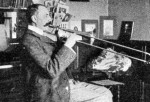 THE ARRANGER’S CHAIR (TM), is a new series launched by davidbrubeck.com featuring trombonists who were also composers and/or arrangers. It would be unimaginable for young pianists to study their instrument without becoming aware of the great traditions of keyboardists such as J. S. Bach and Ludwig van Beethoven. Yet many young trombonists are unaware of the rich tradition of the composers and arrangers who have played the trombone. Nelson Riddle stands among the finest of American arrangers, having arranged for such notable vocalists as as Frank Sinatra, Ella Fitzgerald, Nat King Cole, Peggy Lee, Dean Martin, and Linda Rondstadt. Riddle also composed for television and film, received multiple award nominations, won three Grammys and an Oscar.
THE ARRANGER’S CHAIR (TM), is a new series launched by davidbrubeck.com featuring trombonists who were also composers and/or arrangers. It would be unimaginable for young pianists to study their instrument without becoming aware of the great traditions of keyboardists such as J. S. Bach and Ludwig van Beethoven. Yet many young trombonists are unaware of the rich tradition of the composers and arrangers who have played the trombone. Nelson Riddle stands among the finest of American arrangers, having arranged for such notable vocalists as as Frank Sinatra, Ella Fitzgerald, Nat King Cole, Peggy Lee, Dean Martin, and Linda Rondstadt. Riddle also composed for television and film, received multiple award nominations, won three Grammys and an Oscar.
Sinatra’s Greatest Hit
A former sideman with Charlie Spivak and Tommy Dorsey and trombonist turned master arranger, Nelson Riddle is perhaps most famous for his work with Frank Sinatra. The Riddle and Sinatra collaboration which has become an 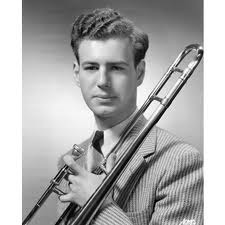 indelible masterpiece is their recording of Cole Porter’s “I’ve Got You Under My Skin”. “Skin” and numerous other Riddle arrangements popularized use of of the bass trombone as a solo melodic bass voice.
indelible masterpiece is their recording of Cole Porter’s “I’ve Got You Under My Skin”. “Skin” and numerous other Riddle arrangements popularized use of of the bass trombone as a solo melodic bass voice.
From Ed O’Brien on a Sinatra List
Fifty years ago this evening Frank Sinatra entered Capitol’s KHJ Studios on Vine St. and from 8 to 11:30 proceeded to record 4 songs. Three of the tunes were done for “Songs for Swingin’ Lovers” and one, “Flowers Mean Forgiveness,” was laid down for a single release. The session was arranged and conducted by Nelson Riddle. A thirty-four piece orchestra and a chorus of four male singers had been contracted for the evening……During the afternoon rehearsal the musicians gave Riddle a standing ovation after running down the “Skin” chart.
Even today it is difficult to fully comprehend the importance of that moment so long ago now. Sinatra and Riddle created a sound that evening destined to be imitated by scores of singers. The urban ethos “Skin” would personify became the single most identifiable Sinatra sound.
There were 22 takes done before Frank and Nelson reached the level of excellence that would become the legendary recording. Here is guitarist Bob Bain’s recollection of that evening:
BB: I was sitting right next to Milt Bernhart. Milt was just terrified. The work was so demanding. And they would say we’ve got to do another one. He would look at me and say, “I don’t have another one left. “The take they finally took was the best solo he did all night.
EOB: There were 22 takes. I should mention the date was 1-12-56.
BB: There was a lot of tension building up. Nelson was getting impatient. Frank was getting impatient. Milt had to play that solo on top of the brass. He had to really blow hard.
EOB: Do you remember anything else about that session ? It was really a historic session.
BB: This is what I remember: I was very close to Doreen Riddle, Nelson’s first wife. A few days after the sessions, Frank invited Nelson and Doreen down to Palm Springs. The evening they were there at Frank’s house, he just kept playing “I’ve Got You Under My Skin” over and over and over again. He kept saying, “You mother, you really wrote your ass off on this one.” He just kept making comments to them on how great the arrangement was. Doreen told me she got sick of listening to the song. He would play it and then go play it again. And play it again.
EOB: I think it is without question his single greatest recording.
BB: Yes, it is.
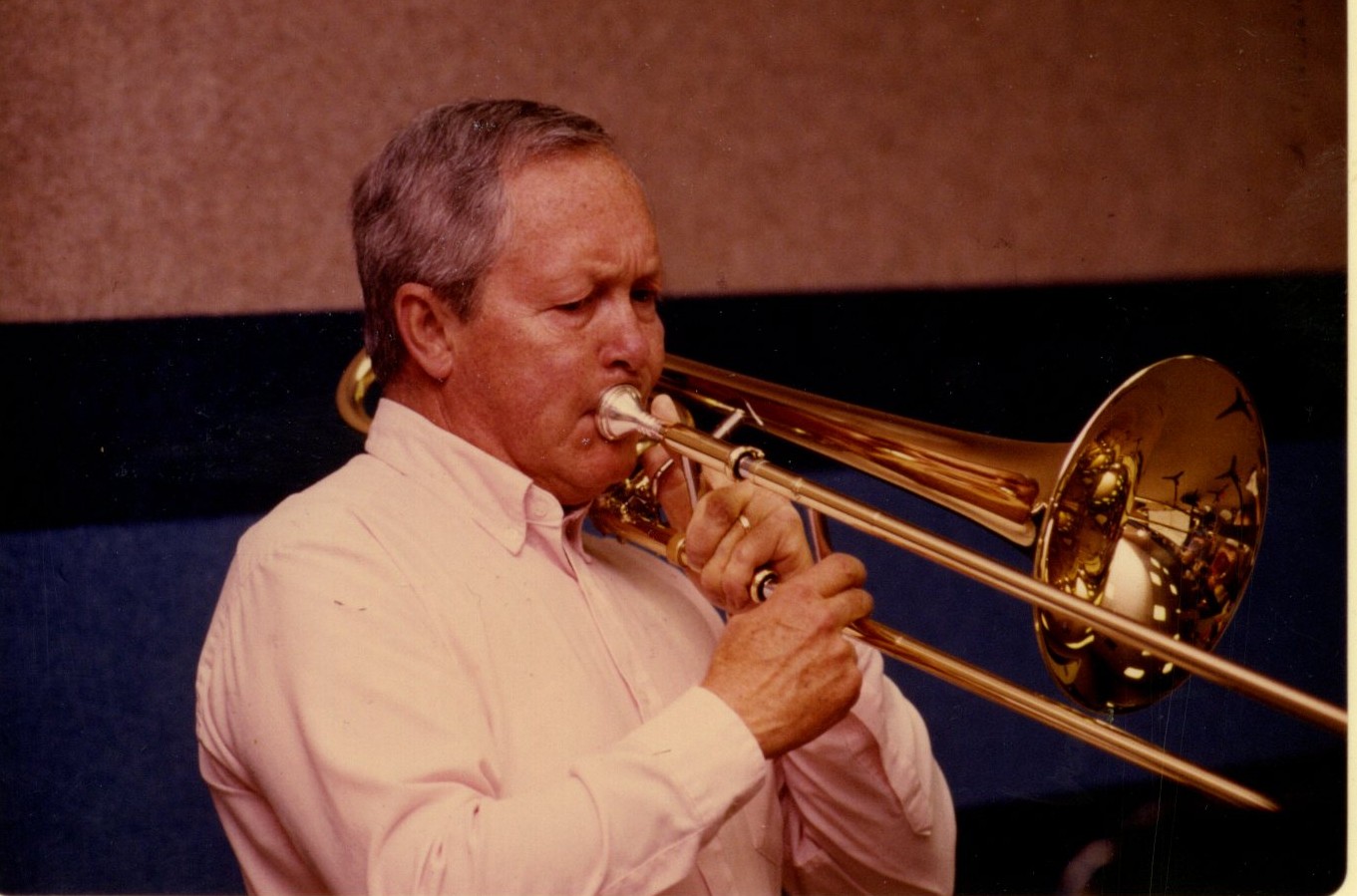
George Roberts, bass trombonist, had some fascinating background information:
EOB: Can you give me some background on the recording of I’ve
Got You Under My Skin?
GR: The song was a big, big thing for me. The Afro-Cuban rhythmical piece in the center of the song. He called me up about a month or month and a half in front of that session. He said that Frank wanted a long crescendo in the middle. Nelson did it with trombones. It set up a pattern of five different contrapella lines going at the same time. And it started with bass trombone. Being on that tune, it was just about the biggest single record Nelson ever did, really opened things up for me. Sinatra sang the song thousands of times in concert and often told his audience it was Nelson Riddle’s finest hour.
The Afro-Cuban Origins of the Bass Trombone
In an interview with Gary Giddins, Milt Bernhart, the wonderful jazz trombone soloist on the Sinatra/Riddle Recording of “I’ve Got You Under My Skin”, traced this technique of the melodic (and rhythmic) use of the bass trombone back to the Bill Russo title “23 North by 82 West” composed for the Stan Kenton Orchestra. The melodic and rhythmic use of the bass trombone, a technique pioneered by Kenton and perfected by Riddle, was said to have been influenced by the earlier arrangements of the Sauter Finnegan Orchestra and, in their original form, the Afro-Cuban music of Dizzy Gillespie.
Gary Giddins interview with Milt Bernhart:
GARY: What was the tune that Bill Russo had written?
MILT: Bill Russo wrote a thing for Kenton(?) that, I don’t know the exact numbers. Twenty Degrees North, Ten Degrees South, something, you know, the longitudinal location of Havana, Cuba.
GARY: And the montuna, is that for trombone?
MILT: It is indeed. (sings) It’s actually a Dizzy Gillespie thing came first. Cubana Be, Cubana Bop. Came first. First big band montuna jazz, be bop. But Russo wrote something, not a copy, but something with that flavor, that Twenty Degrees or whatever it is and it was done very well. It had a good Frank Rossilino, a very good Frank Rossalino solo in it. It’s one of (Stan’s) best records, really. (ordering dinner)
GARY: So it was Nelson’s idea to use that for…?
MILT: I don’t think it was Nelson’s idea. This is all in retrospect, well after the fact, years and years after the fact that it occurred to me much much later that that I’ve Got You Under My Skin, the Frank Sinatra recording, that went into a Latin, a Latino type of a thing in the middle, with the trombones, first the bass trombone, then another trombone plays another thing, which began with Dizzy. And Diz and then the Kenton record was the next recording that followed through but it wasn’t exactly a copy. It was fresh. Bill Russo. And then this one. But I wasn’t really thinking about that, but that’s where they got it. And it was one of Sinatra’s first Capitol Records. Not the first, but one of them. First dates…first important date. There had been some dates.
(Editor’s note: Bernhart recalled that he and bass trombonist George Roberts were joined on the recording by Juan Tizol (the valve trombonist and composer with Duke Ellington) and Jimmy Priddy (a copyist for Nelson Riddle and former lead player for Glen Miller).
“The Arrangers Chair”
Riddle was one of the most famous inhabitants of “the arrangers chair” (occupants of trombone chairs in big bands), along with Sammy Nestico and Glenn Miller. Riddle’s most notable trombone tenure was a short stint with Tommy Dorsey-an experience in common with Frank Sinatra. By the 1960 Dean Martin recording of Jule Styne’s “Just in Time”, the Nelson Riddle style was already in full blossom. The melodic and rhythmic bass function of the bass trombone are beautifully expressed and executed against the delightfully breezy interpretation of Dean Martin.
Why the Bass Trombone?
How did Nelson Riddle become so enamored with the bass trombone? Bandleader and bass trombonist Chris Riddle provides the answer, “When George Roberts left Stan Kenton, he took a little aprtment in Santa Monica. It so happened that we lived very nearby (427, 7th St.). I can’t remember how he met my father, but my mother said he would come over and dipslay the usefulness of the bass trombone. He got my father ‘hooked’, and the rest is musical history.” Chris was a bass trombone student of George Roberts, and leads the Nelson Riddle Orchestra.
Acknowledgements
This article and Stereogram have been made possible through the kindness and graciousness of several individuals. Thanks to the estates of Jule Styne (www.julestyne.com), & Nelson Riddle (www.nelsonriddlemusic.com), from whom permission for Stereogram No. 36 has been requested. I would like to express my gratitude to jazz bass trombonists Bill Reichenbach for his proofreading of the Stereogram No. 36, and to Michael Nunez for engraving it. Special thanks to Gary Giddins for the excerpt of his interview with Milt Bernhart and Ed O’Brien for his interview. Very special thanks to Chris Riddle for adding the final piece of the puzzle.
Gillespie to Holman to Riddle to Stereograms
Visual stereo grams, (like those found in the “Magic Eye” series of 3-D images), feature multiple images within a single image. Similarly, Stereograms for bass trombone present two or more parts alternating within a single melodic line. This “implied homophony” is reminiscent of the work of singer Bobby McFerrin, and draws heavily upon the melodic and rhythmic bass trombone concept founded by Stan Kenton & Neslon Riddle and inspired by ‘Dizzy’ Gillespie. The rhythmic interpretation of the melody in Stereogram No. 36 is courtesy of Dean Martin, and the bass trombone accompaniments to the melody are inspired by Nelson Riddle’s arrangement for Dean. Stereograms for solo bass trombone have been performed and recorded all over the world, and adapted for tuba and baritone saxophone.
Free Trombone Music
Stereogram No. 36, is available for free! An advantage of switching back and forth between several parts is the technique pianists refer to as ‘voicing’, or imbuing each separate part or “voice” with it’s own dynamic, articulation, and other expressive nuances. Try to balance the smoother, softer and more relaxed vocal stylings inspired by Dean Martin’s interpretation, with the hard driving swing of Riddle’s instrumental accompaniment. The melody switches to the lower part in the middle, and special emphasis should be given to those parts native to the bass trombone throughout. Enjoy!
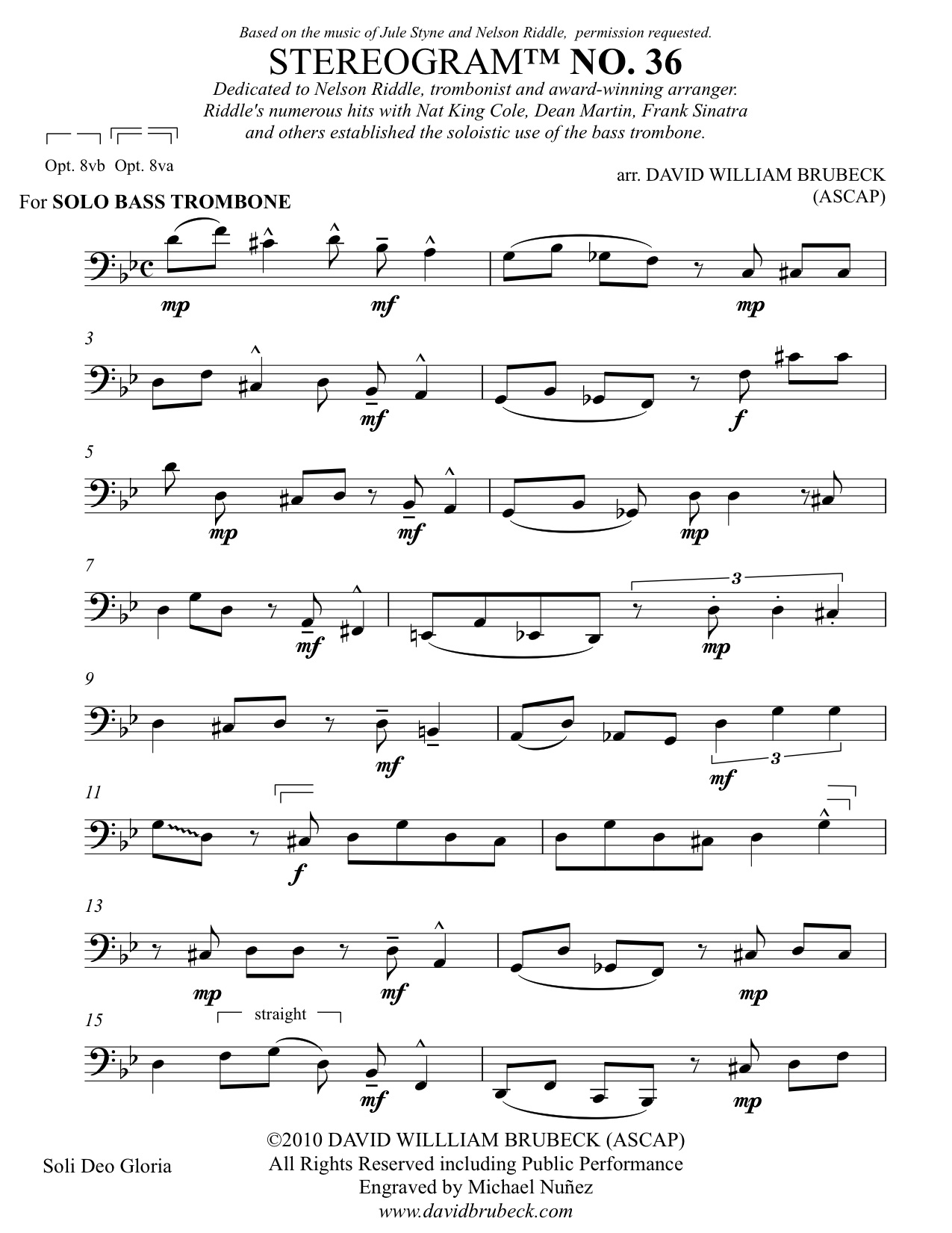
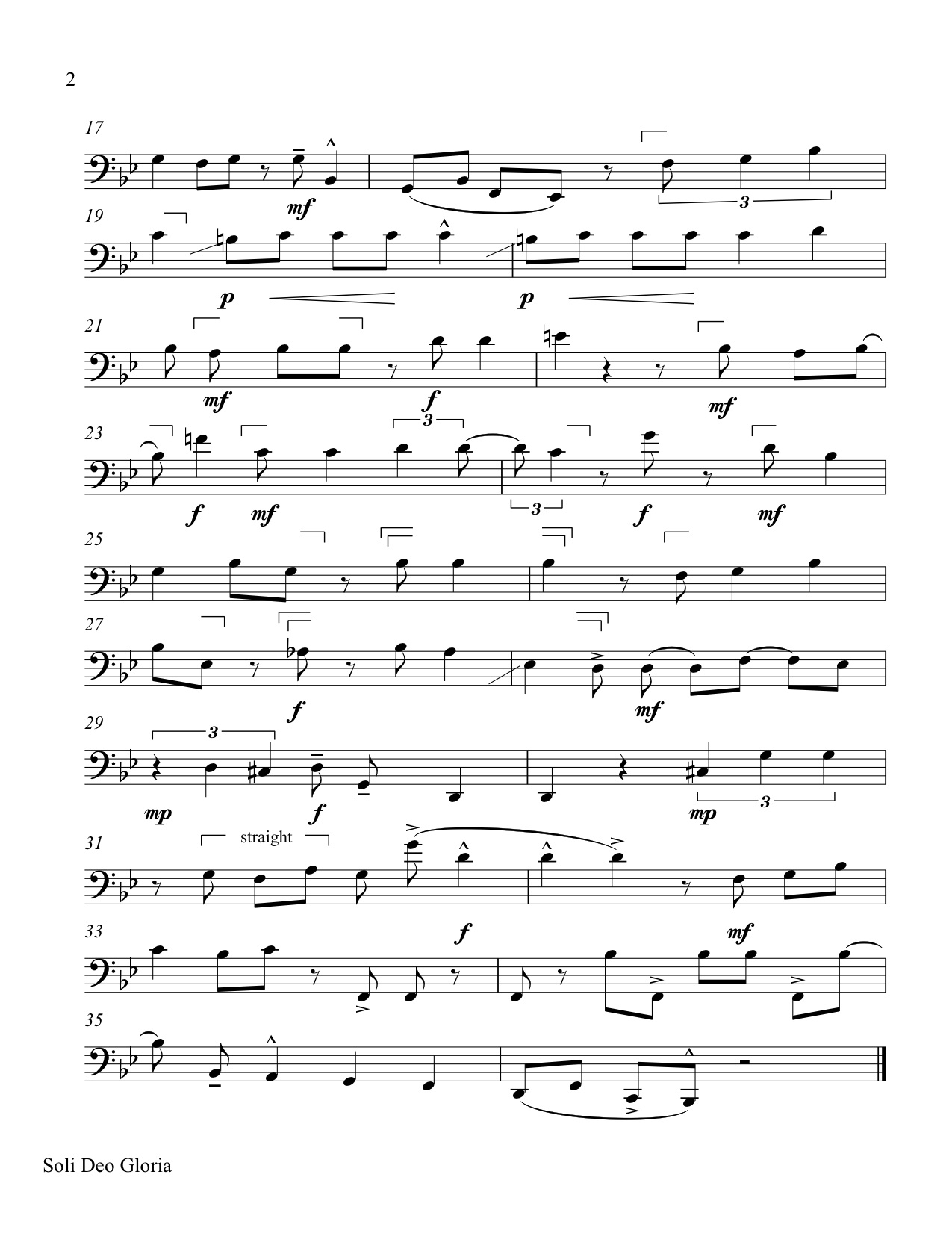
c. 2013 David William Brubeck All Rights Reserved davidbrubeck.com
Stereograms are available from Hickey’s music and other fine retailers.
Stereograms Not. 1-20, Advanced-Intermediate Original Compositions for bass trombone/bass clef instruments
https://www.hickeys.com/search/products/sku050091.php
Stereograms Nos. 21-30, Advanced-Intermediate Original Compositions for bass trombone/bass clef instruments
https://www.hickeys.com/search/products/sku092661.php
Stereograms A-M, Beginner-Intermediate Arrangements for bass trombone/bass clef instruments
https://www.hickeys.com/search/products/sku099768.php
______________________

